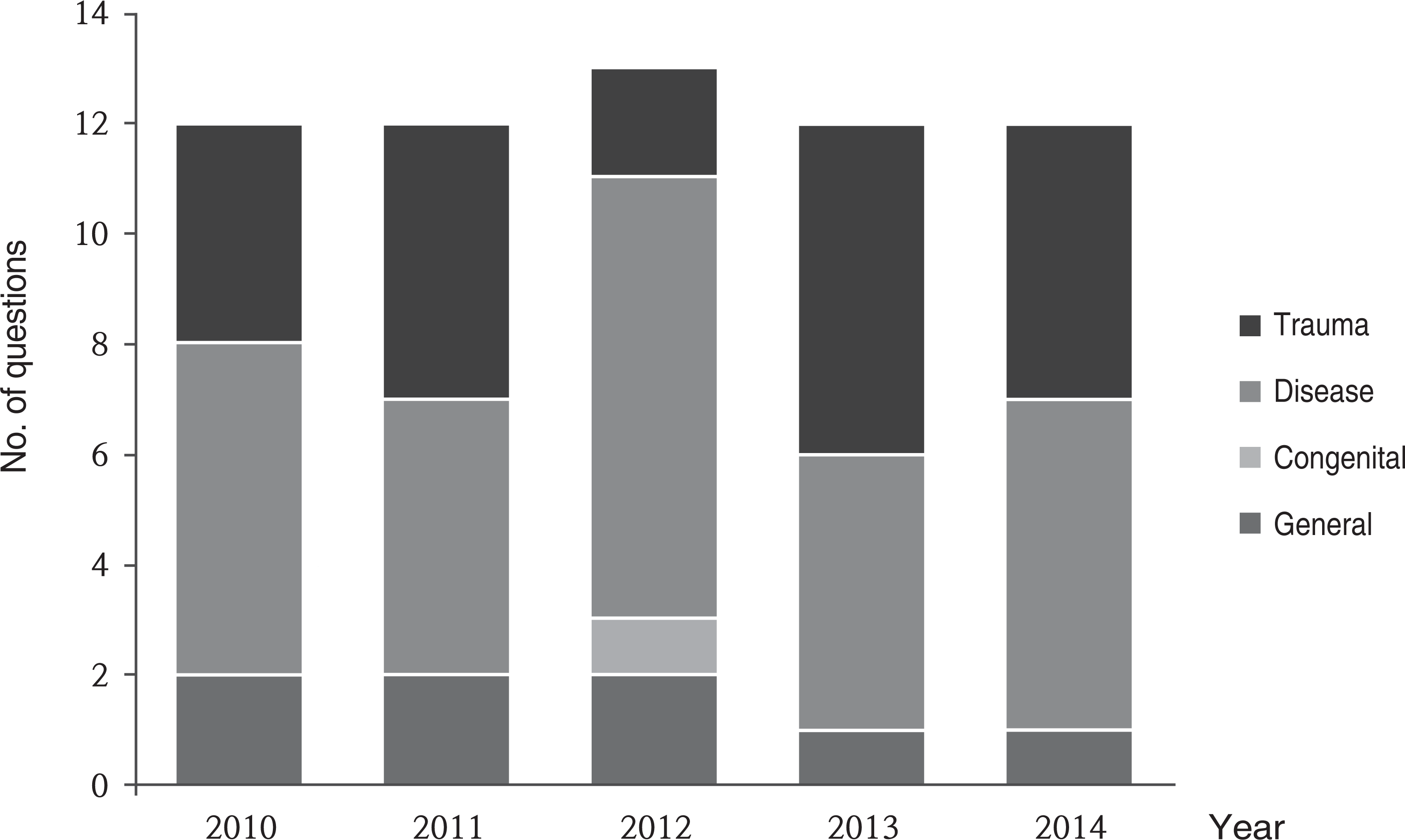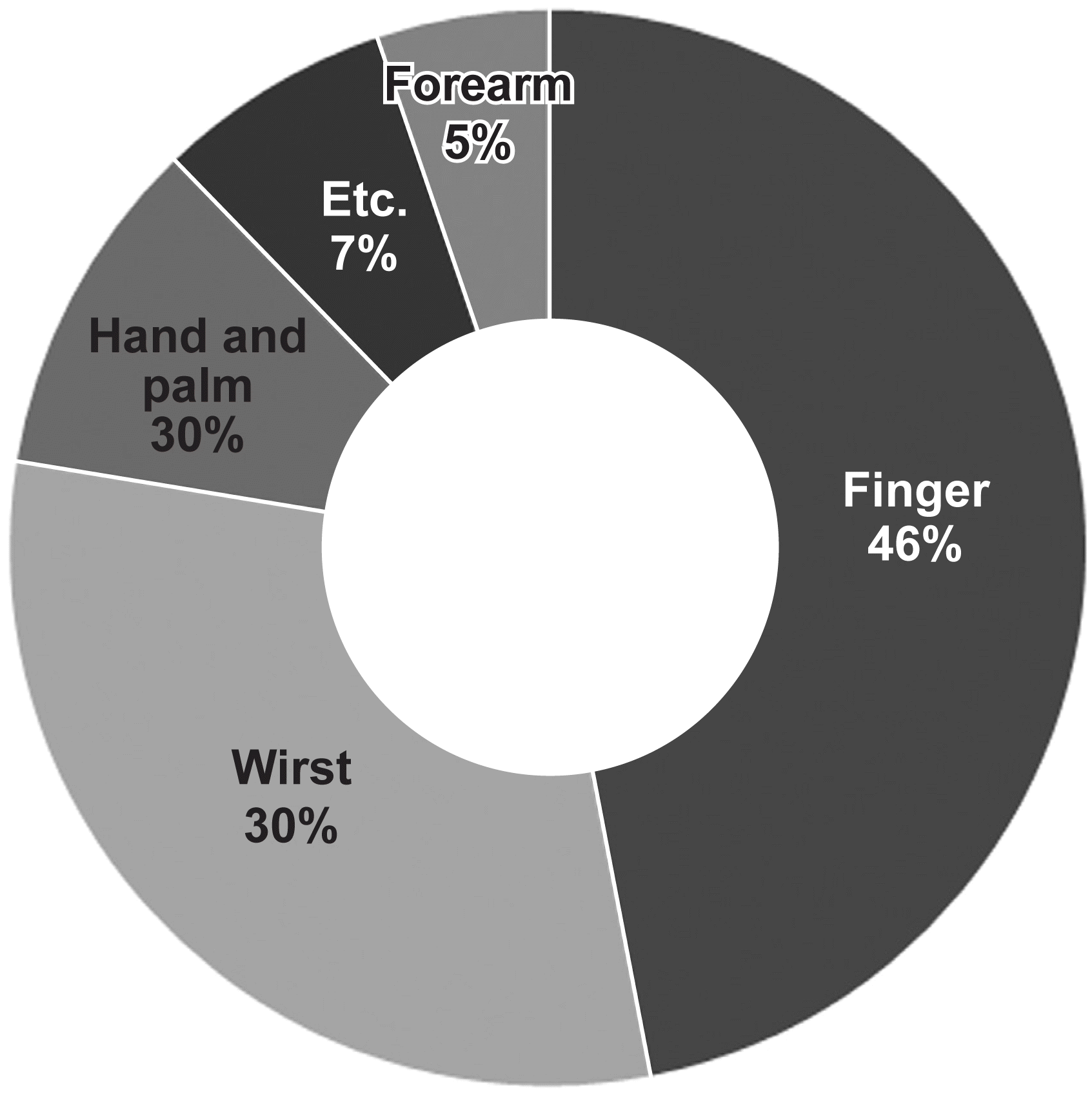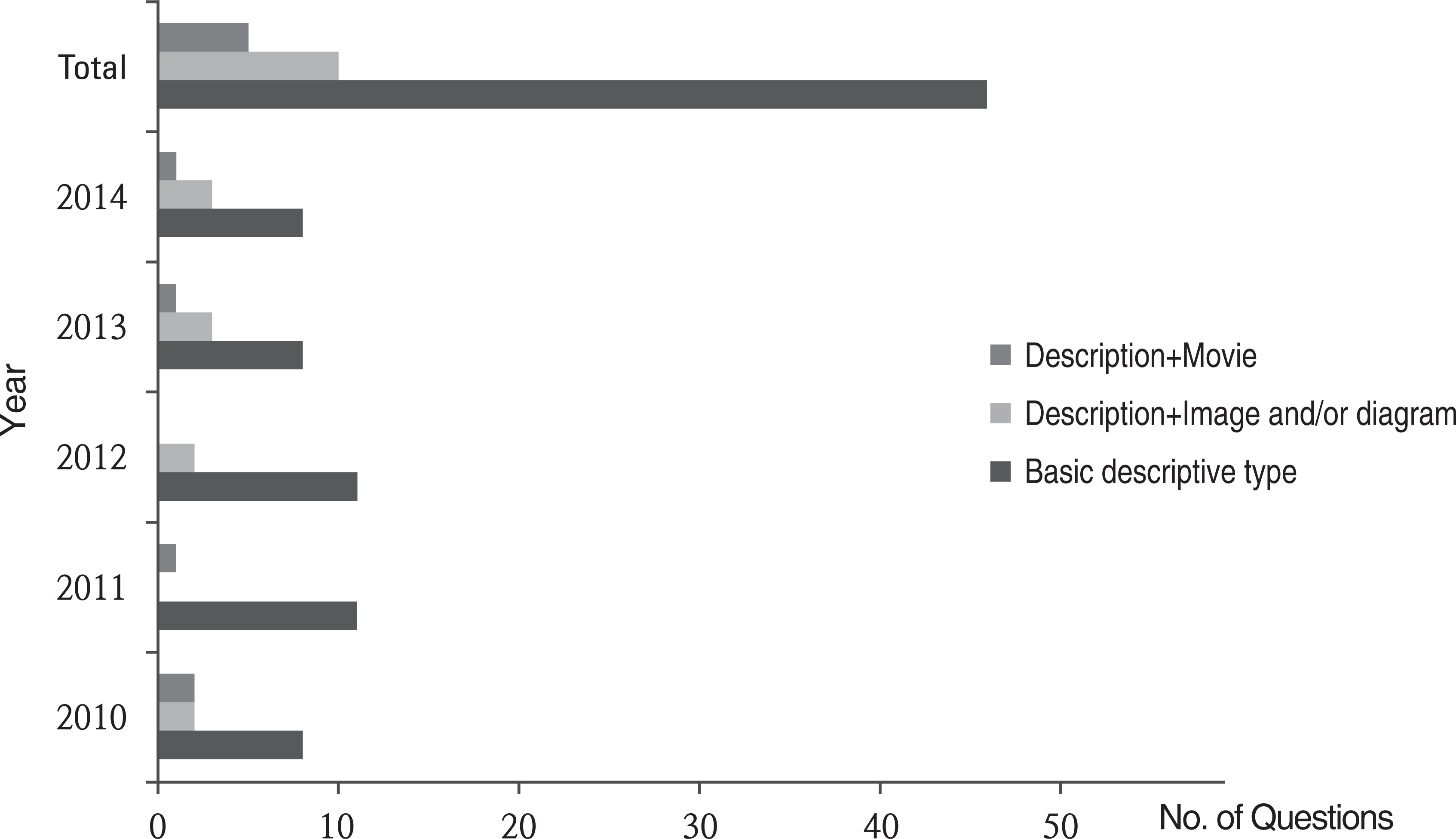Abstract
Purpose:
To evaluate the questions of hand and wrist section of Korean orthopedic in-training examination (KOITE).
Methods:
We analyzed questions of hand and wrist section of KOITE between 2010 and 2014. The weight of hand and wrist section was calculated and topics were thoroughly analyzed. The construct of questions were evaluated and taxonomic classifications were also performed. The frequency of presentations of physical examinations and radiologic evaluations in diagnosis and treatment related questions were analyzed. The coverage of available references which were recommended by Korean Orthopedic Association (KOA) were analyzed.
Results:
Sixty one out of 500 questions (weight: 12.2%) were related with hand and wrist section. Disease (30/61, 48.2%) was more commonly asked than trauma, however most frequently asked topic with a broad classification was fractures and dislocations (19/61, 31.1%). The description only questions (46/61, 75.4%) were most commonly asked construct of question. According to taxonomic classification, taxonomy B (diagnosis; 27/61, 44.3%) was most frequently asked. The Campbell's operative orthopedics (54/61, 88.5%) and textbook of KOA (53/61, 86.9%) were representative references covering questions most widely.
Go to : 
REFERENCES
1. Suk SI, Chang IY, Yoo MC, Chung MS. The first in-training examination for residents in orthopaedic surgery. J Korean Orthop Assoc. 1980; 15:874–8.

2. Gregory CF. British Orthopadeic Association Guest Lecture: “Some observations on the postgraduate medical education of orthopaedic surgeons”. J Bone Joint Surg Br. 1974; 56:573–9.
3. Hubbard JP, Furlow LT, Matson DD. An in-training examination for residents as a guide to learning. N Engl J Med. 1967; 276:448–51.

4. Matson DD. An in-training evaluation of residency training programs and trainees. Can Med Assoc J. 1966; 95:717–9.

5. Meskauskas JA, Newton M, Russell KP. The 1973 in-training examination in obstetrics and gynecology. Obstet Gynecol. 1974; 44:463–8.
7. Risner B, Nyland J, Crawford CH 3rd, Roberts CS, Johnson JR. Orthopaedic in-training examination performance: a nine-year review of a residency program database. South Med J. 2008; 101:791–6.

8. Mankin HJ. The orthopaedic in-training examination (OITE). Clin Orthop Relat Res. 1971; 75:108–16.

9. Marker DR, Mont MA, McGrath MS, Frassica FJ, LaPorte DM. Current hand surgery literature as an educational tool for the orthopaedic in-training examination. J Bone Joint Surg Am. 2009; 91:236–40.

10. Nattress LW Jr. The role of the university in graduate medical education. 4. Orthopaedic certification examination. J Med Educ. 1969; 44:890–5.

11. Osbahr DC, Cross MB, Taylor SA, Bedi A, Dines DM, Dines JS. An analysis of the shoulder and elbow section of the orthopedic in-training examination. Am J Orthop (Belle Mead NJ). 2012; 41:63–8.
Go to : 
 | Fig. 1.Topics in wrist and hand section of Korean Orthopedic In-training Examination between 2010 and 2014. |
 | Fig. 2.Prevalence of questions in hand and wrist section of Korean Orthopedic In-training Examination (KOITE) which were classified according with anatomic locations. |
 | Fig. 3.Distribution of constructs of questions which were classified as description only (basic descriptive type), description plus image and (or) diagram and description plus movie. |
Table 1.
Topics tested in hand and wrist section of Korean Orthopedic In-training Examination by years (Broad classification)
Table 2.
Topics in hand and wrist section of Korean Orthopedic In-training Examination by years (Specific classification)
Table 3.
Ratio of coverage of questions in hand and wrist section of Korean Orthopedic In-training Examination by each Korean Orthopedic Association recommended reference




 PDF
PDF ePub
ePub Citation
Citation Print
Print


 XML Download
XML Download